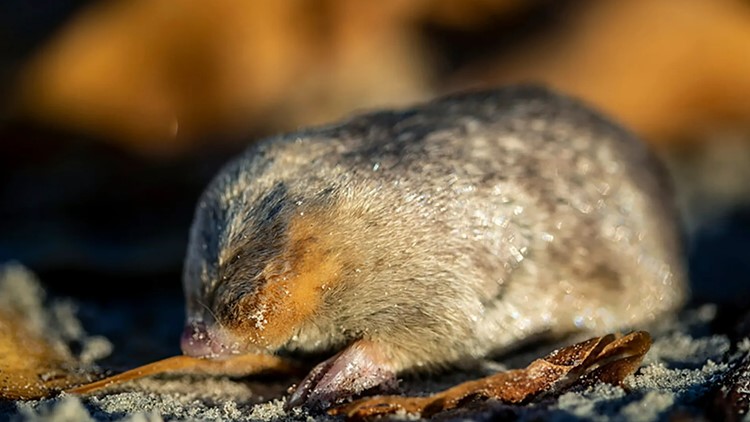SOUTH AFRICA, — A golden mole that "swims" in sand has resurfaced in South Africa after 87 years in the wilderness when many specialists feared it had become extinct, researchers announced.
Traces of two De Winton's golden moles have been found under the sands of a beach after a "detective novel search," said Esther Matthew, Endangered Wildlife Trust (EWT) senior field officer, on Tuesday.
"It was a very exciting project with many challenges," Matthew said in a statement. "Luckily we had a fantastic team full of enthusiasm and innovative ideas."
EWT and University of Pretoria researchers covered up to 11.2 miles of dune habitat a day as they spent months hunting for signs, said Matthew.
The blind moles are cute but excessively timid.
They pick inaccessible areas to burrow homes and have extremely sensitive hearing to detect ground vibrations made by anyone who could be looking for them. The last scientific trace dates back to 1936.
The team used a scent-detecting Border Collie dog, Jessie, to find traces of the moles' tunnels.
There are 21 species of golden moles and the De Winton's were detected using environmental DNA samples -- skin, hair and bodily excretions -- taken from soil at Port Nolloth beach on the northwest coast.
More than 100 samples were collected from the dunes.
Even now the researchers have not physically seen the blind mole that has an iridescent coat sheen that allows it to "swim" through sand.
To finally make a connection, they have made videos and taken photos.
Their research paper, "Environmental DNA from soil reveals the presence of a 'lost' Afrotherian species," was published Nov. 24 in the scientific journal Biodiversity and Conservation.
"We solved the riddle"
The De Winton's golden mole was one of the top 25 animals on a list of long-lost species drawn up by the Re:wild non-government group in 2017.
Eleven have now been discovered again.
"Though many people doubted that De Winton's golden mole was still out there, I had good faith that the species had not yet gone extinct," said Cobus Theron, senior conservation manager for EWT and a member of the search team. "I was convinced it would just take the right detection method, the proper timing, and a team passionate about finding it. Now not only have we solved the riddle, but we have tapped into this eDNA frontier where there is a huge amount of opportunity not only for moles, but for other lost or imperiled species."
Christina Biggs, a lost species specialist for Re:wild, praised the persistence of the team that found the moles.
"They left no sandhill unturned and now it's possible to protect the areas where these threatened and rare moles live," said Biggs.
The rediscovered De Winton's golden mole is the eleventh of the "world's most wanted lost species" to be rediscovered, according to Re:wild.
The use of environmental DNA was a "case study on how such forward-thinking technologies can be utilized to find other lost species."
The team found traces of four other golden moles in the same region. Matthew said the De Winton's are still threatened by mining and residential developments near the beaches that are their home.



